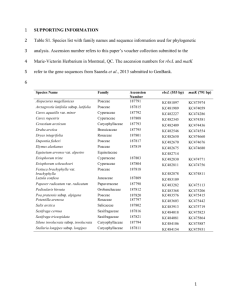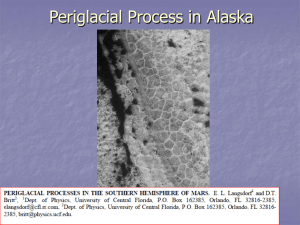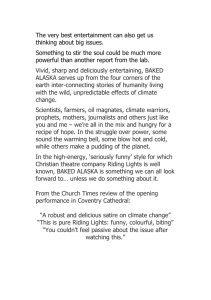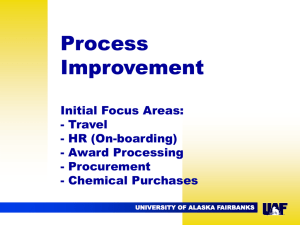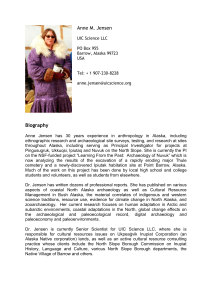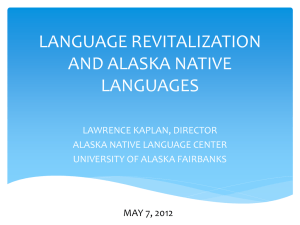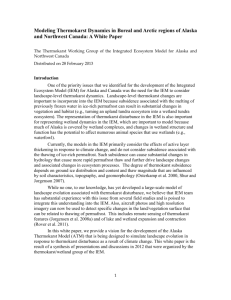Spatial distribution of thermokarst landforms across Arctic Alaska L
advertisement
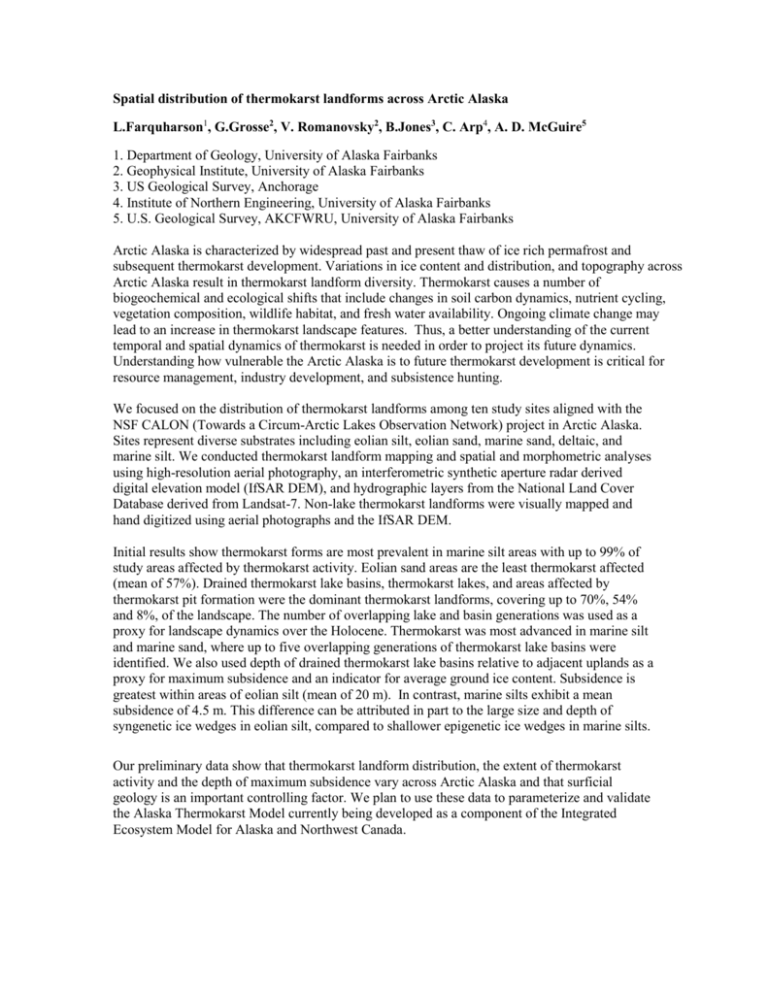
Spatial distribution of thermokarst landforms across Arctic Alaska L.Farquharson1, G.Grosse2, V. Romanovsky2, B.Jones3, C. Arp4, A. D. McGuire5 1. Department of Geology, University of Alaska Fairbanks 2. Geophysical Institute, University of Alaska Fairbanks 3. US Geological Survey, Anchorage 4. Institute of Northern Engineering, University of Alaska Fairbanks 5. U.S. Geological Survey, AKCFWRU, University of Alaska Fairbanks Arctic Alaska is characterized by widespread past and present thaw of ice rich permafrost and subsequent thermokarst development. Variations in ice content and distribution, and topography across Arctic Alaska result in thermokarst landform diversity. Thermokarst causes a number of biogeochemical and ecological shifts that include changes in soil carbon dynamics, nutrient cycling, vegetation composition, wildlife habitat, and fresh water availability. Ongoing climate change may lead to an increase in thermokarst landscape features. Thus, a better understanding of the current temporal and spatial dynamics of thermokarst is needed in order to project its future dynamics. Understanding how vulnerable the Arctic Alaska is to future thermokarst development is critical for resource management, industry development, and subsistence hunting. We focused on the distribution of thermokarst landforms among ten study sites aligned with the NSF CALON (Towards a Circum-Arctic Lakes Observation Network) project in Arctic Alaska. Sites represent diverse substrates including eolian silt, eolian sand, marine sand, deltaic, and marine silt. We conducted thermokarst landform mapping and spatial and morphometric analyses using high-resolution aerial photography, an interferometric synthetic aperture radar derived digital elevation model (IfSAR DEM), and hydrographic layers from the National Land Cover Database derived from Landsat-7. Non-lake thermokarst landforms were visually mapped and hand digitized using aerial photographs and the IfSAR DEM. Initial results show thermokarst forms are most prevalent in marine silt areas with up to 99% of study areas affected by thermokarst activity. Eolian sand areas are the least thermokarst affected (mean of 57%). Drained thermokarst lake basins, thermokarst lakes, and areas affected by thermokarst pit formation were the dominant thermokarst landforms, covering up to 70%, 54% and 8%, of the landscape. The number of overlapping lake and basin generations was used as a proxy for landscape dynamics over the Holocene. Thermokarst was most advanced in marine silt and marine sand, where up to five overlapping generations of thermokarst lake basins were identified. We also used depth of drained thermokarst lake basins relative to adjacent uplands as a proxy for maximum subsidence and an indicator for average ground ice content. Subsidence is greatest within areas of eolian silt (mean of 20 m). In contrast, marine silts exhibit a mean subsidence of 4.5 m. This difference can be attributed in part to the large size and depth of syngenetic ice wedges in eolian silt, compared to shallower epigenetic ice wedges in marine silts. Our preliminary data show that thermokarst landform distribution, the extent of thermokarst activity and the depth of maximum subsidence vary across Arctic Alaska and that surficial geology is an important controlling factor. We plan to use these data to parameterize and validate the Alaska Thermokarst Model currently being developed as a component of the Integrated Ecosystem Model for Alaska and Northwest Canada.
